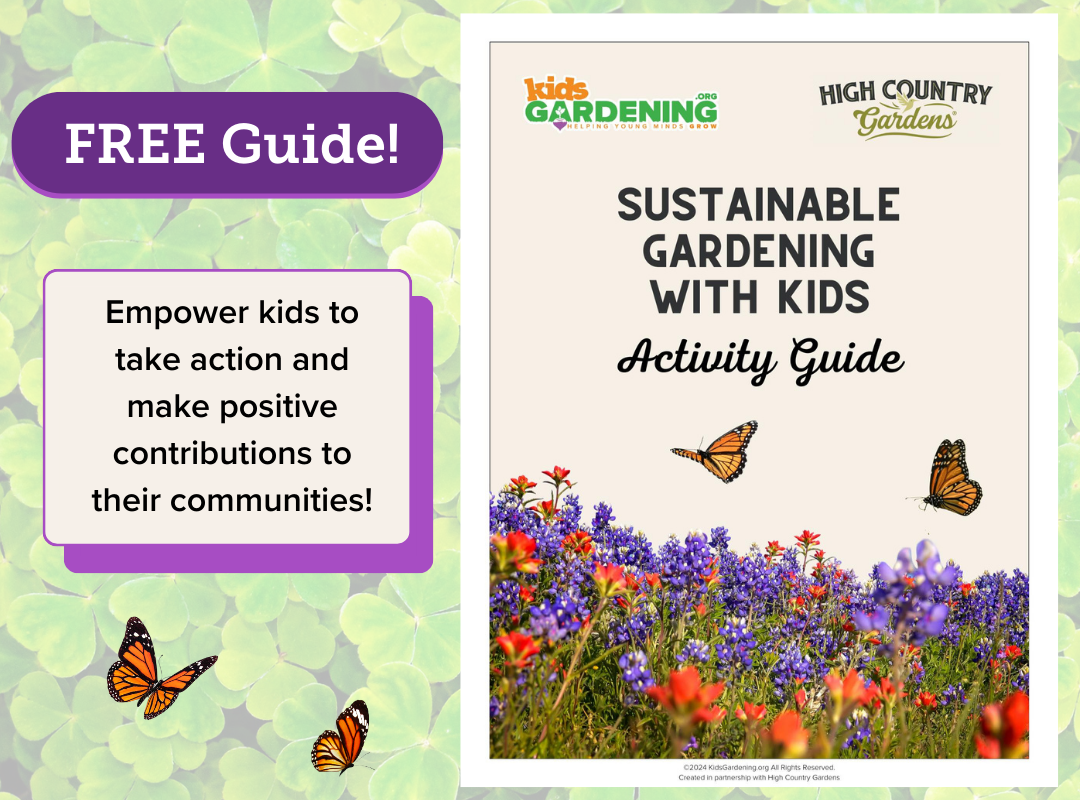Materials:
- Internet access and reference books for research
- notebooks
Background Information:
You don't need a lot of space to start a pollinator garden. Even a few containers of flowers can attract hungry bees and butterflies. To plan a pollinator garden, students will need to know the basic needs of wildlife — food, water, shelter, and places to rear young:
- Food sources (host plants). Although pollinators in their adult stages generally thrive on flower nectar and/or pollen, larval stages generally have a penchant for plant leaves. Good plants for pollinators include: aromatic herbs (coriander, catnip, mint, parsley, lavender), annuals (marigold, phlox, bachelor's button, zinnia, cosmos, salvia), and perennials (bee balm, Shasta daisy, iris, coneflower, lobelia, delphinium). Try to plan a combination that ensures something is blooming at all times during the growing season.
Another option is to allow a section of your schoolyard to revert to wild grasses, weeds, and wildflowers (e.g., milkweed and Queen Anne's lace).
- Water. Pollinators such as butterflies will gather and sip at shallow pools, mud puddles, and birdbaths; bees and wasps can use mud as a home-building material. Mud puddles also provide important minerals for some pollinators.
- Sites and materials for nesting and overwintering. Leave cut plant stems exposed, place flowerpots with drainage holes bottom-up on the ground, leave twigs and brush in small piles, create mud puddles, or put out pieces of string or other light fibers. Students can even build nesting structures for certain types of bees and bats.
Another important consideration: Do not use pesticides and herbicides in or around your pollinator garden. Even organic pesticides derived from plants and microbes can be harmful to pollinators as well as pests. Herbicides may wipe out key plants (weeds) that are important food plants for pollinators. Diverse plantings are less likely to have severe pest problems and are more likely to attract pest insects’ natural enemies: predatory insects and birds. If certain plants are continually plagued with pests, replace them with less susceptible species or varieties.
Laying the Groundwork:
- If possible, have students spend at least a couple of sessions observing flowers and their visitors in the schoolyard and/or at home. Ask the following guiding questions:
- What types of insects or other animals are visiting which flowers?
- Are some flowers visited more often or only by certain creatures?
- Is there more activity at certain times of day?
- What kinds of paths do the insects take as they move among flowers?
- Which types hover and which perch?
- How do the flowers they visit seem designed to support these habits?
- Does a mixed planting draw more different kinds of pollinators?
Students' observations should lead to more questions, some of which they can answer through systematic observations and some through further research.
Exploration:
- If you don't already have a garden site, have the class scope out a location that receives at least six hours of full sun each day. If your growing space is limited, consider growing the pollinator plants in containers filled with a rich, well-drained soil mix
- Next, research pollinator species native to your region.
- Find out what specific plants and habitat features these creatures need to thrive and reproduce. In general, the greater variety of plant types you have (trees, shrubs, perennials, annual flowers and herbs), the more pollinators you'll attract. Since pollinators have different needs during different life cycle stages, maintaining diversity will also make your site more of a full-service oasis.
Consider the following when creating your plant list:
- Use as many plants native to your region as possible. Native plants have evolved closely with native creatures and are well suited to meet their needs. In fact, some pollinator species are entirely dependent on the availability of certain native plants. (Your state’s agency of natural resources and/or conservation and native plant societies are excellent resources to tap. They may also have Web sites that offer plant lists and habitat information.)
*Note: Never dig plants from the wild unless the area is slated for destruction and development and you have permission from the landowner. The best source for native plants is a local nursery or native plant association that offer plants that have been grown, not gathered.
- Whether using native or nonnative plants, shoot for old-fashioned varieties. Many garden varieties have been bred to look or smell nice for humans, but they often lack accessible nectar or pollen for animal partners.
- Choose a range of flower shapes and sizes to suit the feeding preferences of a variety of pollinators.
- Include a variety of flowers that bloom throughout the season. By doing so, you will accommodate different pollinators' preferences and provide a sequence of pollen and nectar sources throughout different life cycle stages. For instance, flowering shrubs and trees tend to blossom early in the season, providing nectar or pollen when other food is scarce.
Making Connections:
- Possible discussion questions:
- Why are native plants so important to our pollinators?
- Why is it important to include a variety of plants in our garden?
- Learn about the Monarch butterfly migration patterns. Discuss the importance of gardens for migrating pollinators.
Branching Out:
Science – Study the life cycles and anatomy of pollinators that visit your garden.
English – Choose a favorite fruit, vegetable, or nut crop, and research it and its pollinating partner for a written report and/or oral presentation.
History/Social Studies – Discuss how the changes brought to your region by colonizing humans have altered the habitats of pollinators, and how different things might look if pollinators had been on the “planning commission” all along.
English – Create an advertisement for your pollinator garden written for pollinators. The ad should be designed to entice them to visit your garden.



